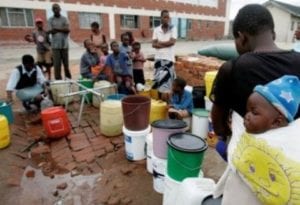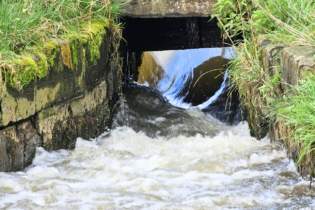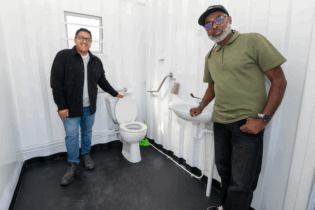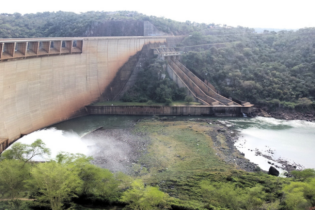Studies have revealed that residents of Zimbabwe’s capital Harare literally drink their waste.
A government owned newspaper at the weekend described pollution levels at Harare’s water source – Lake Chivero – as comparable to a “sewage pond”. It said recent tests on water samples detected about 2mg/l (two milligrammes in every litre of water) of phosphates or human and animal waste, exceeding the 0,5mg/l recommended by the World Health Organisation (WHO). “Investigations showed that levels of phosphate in Harare’s raw water have increased since 1979, a year after the authorities converted Lake Chivero into receptacle of Harare’s sewage effluent,” the Sunday Mail reported. “In 1979, the phosphate levels were an average 0,05 mg/l but in 1991 the figure had increased to 0,18 mg/l. “The levels were 0,0132mg/l in 1995 before increasing to 1,62mg/l in 2009 and reduced slight to 1,38mg/l in 2010. But the fact remains, the phosphate levels are too high.” But Harare spokesperson Leslie Gwindi maintained that the capital city’s water was safe and met WHO guidelines. “People must feel free to drink our water as it is one of the safest, inasmuch as internationally accepted guidelines are concerned,” he said. The Standards Association of Zimbabwe said its analysis of Harare’s tap water had shown that it was safe for domestic consumption. Harare has in recent years experienced serious outbreaks of water borne diseases such as typhoid and cholera. The city was the epicenter of the cholera epidemic that killed over 4000 people country and left 98 000 infected in 2008. A typhoid outbreak left hundreds hospitalised early this year. Revelations that the city’s water source is heavily polluted with human waste came hard on the heels of warnings by the Consumer Council of Zimbabwe (CCZ) that bottled water sold in the country did not meet standards.Many Zimbabweans now resort to bottled water because of an increasing shortage of clean water supplied by urban councils.
A CCZ survey revealed that some of the firms were drawing their water from dams, rivers and boreholes for resale. “Asking the water suppliers, they all indicated that they sourced their water from boreholes, sadly no one can vouch for that and that leaves consumers vulnerable to drinking unsafe, untreated water sourced from potentially unhygienic conditions,” CCZ said in a statement. In Harare, the CCZ said there were suspicions that firms were drawing water from the Harare City Council tapes. “There are concerns as to the cleanliness of the water, the tanks used to move the water and the cleanliness of the processes the water undergoes before its final destination — the consumer,” CCZ said. The organisation said the shortages of clean, safe water have reached “seismic” levels. Harare requires 1 200 megalitres of water a day in winter and close to 1 400 megalitres in summer, but the capacity but can only supply between 600 to 700 megalitres a day. Early this year Harare mayor Muchadeyi Masunda said only 30 percent of residents have access to safe drinking water every day. “Only 30 percent have access to safe water for between three and five days per week. “Twenty percent have access to between one and two days per week; 10 percent rely on boreholes and unprotected wells; 40 percent of the population lacks adequate sanitation,” he said







